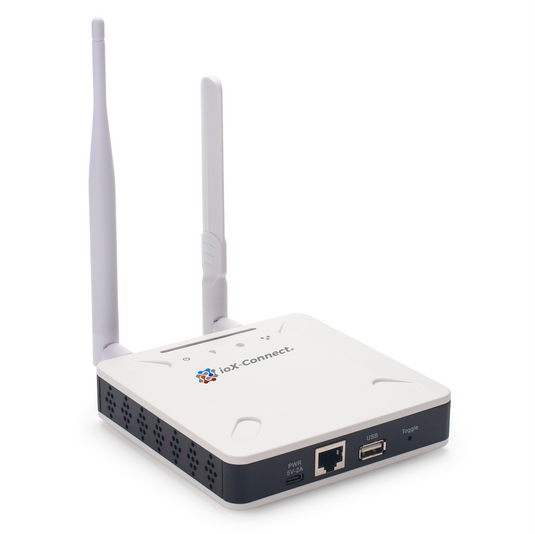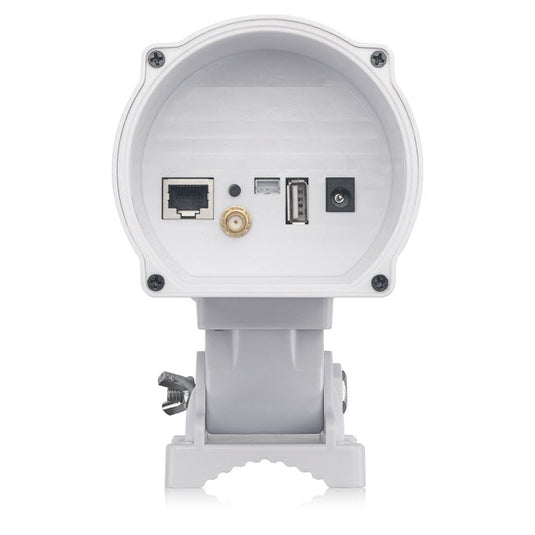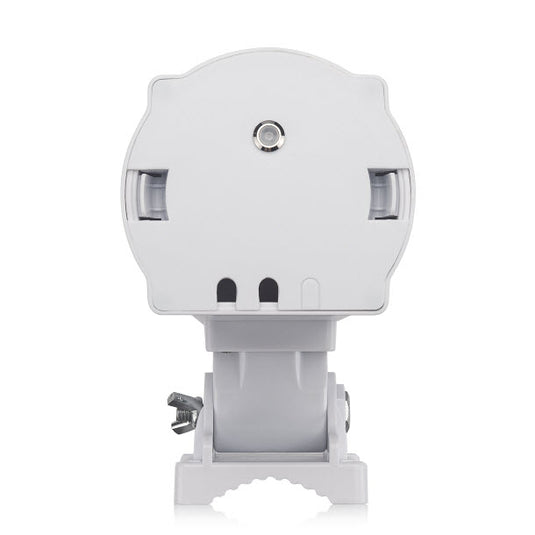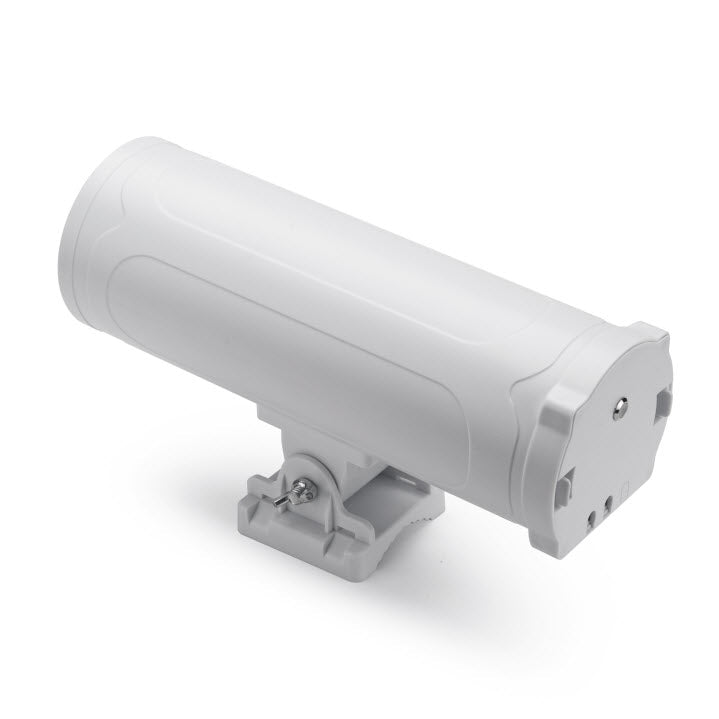
LoRaWAN Gateways
Discover our complete range of LoRaWAN Gateways—indoor and outdoor models engineered for seamless integration with the ioX-Connect platform. Each gateway is powered by a Semtech SX1302 concentrator and comes preconfigured for regional frequency bands, ensuring out-of-the-box compatibility. Plug in via Ethernet or Wi-Fi (with optional 3G/4G cellular failover) and let auto-provisioning automatically onboard all nearby LoRa devices, saving hours on large-scale deployments.
Built for industrial applications, our outdoor gateways feature IP65-rated housings, lightning/surge protection, and built-in GPS, while indoor units deliver compact, reliable performance. Whether you need long-range coverage for remote sites or a streamlined indoor setup, ioX-Connect’s LoRaWAN Gateways deliver secure, scalable connectivity for any IoT project.
Check out: 👉 LoRaWAN Technology: The Ultimate Guide
Contact Us
Please fill out the form below and we’ll get back to you within 24 hours.
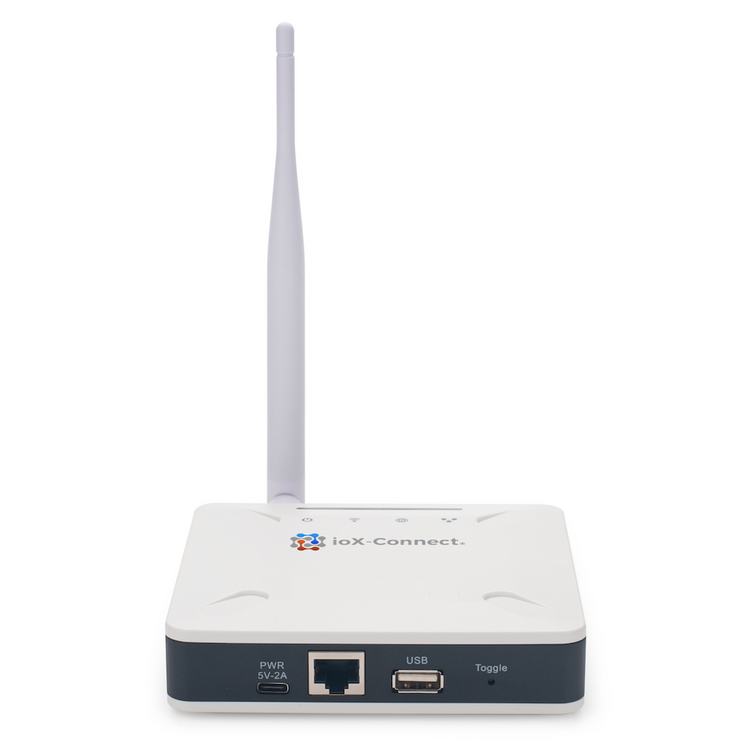
Frequently Asked Questions about LoRaWAN Gateways and Devices
The coverage and performance of a LoRaWAN gateway aren’t fixed values—they’re shaped by a handful of critical variables. Here’s a snapshot of what to consider as you plan your deployment:
- Output Power and Antenna Gain: Higher output power and thoughtfully selected antennas extend reach, especially in open terrain. Swapping antennas can often yield a marked improvement in range.
- Environmental Conditions: Open rural landscapes can deliver impressive distances—up to 20 kilometers isn’t out of the question. Yet, in dense cities with concrete and steel aplenty, your effective coverage can shrink considerably.
- Gateway Placement: Proper positioning is key. Elevated or obstruction-free locations (a rooftop beats a basement) allow signals to travel further with less loss.
- Frequency Band: Regional frequency requirements can influence both range and signal integrity, so operating in the correct band for your geography is essential.
- Interference and Noise: Crowded RF environments—think factory floors or city blocks—can introduce interference that chips away at performance. Gateways equipped with advanced filtering and frequency agility are better able to handle noisy airwaves.
- Device Density and Communication Patterns: Heavy device traffic or lots of messages can bog down a gateway if not managed properly. Scalable solutions help maintain reliability even as your deployment grows.
With the right gateway, proper planning, and a smart site survey up front, you can maximize both reliability and scale—even in challenging environments.
Typical Coverage Range of a LoRaWAN Gateway
Wondering just how far a LoRaWAN gateway can reach? Quite a distance, actually! In open rural landscapes—with minimal buildings and trees to get in the way—you can expect a single gateway to cover anywhere from 3 to 20 kilometers (that’s about 2 to 12 miles, for the non-metric fans).
In busier urban environments, however, tall buildings and other obstacles can bring that range down significantly. Real-world city deployments might see coverage shrink to just a few kilometers, or even less.
A few factors that influence range include:
- Antenna quality and elevation: Higher placement and higher-gain antennas can extend reach.
- Gateway output power: Some regions allow for higher transmission power, boosting distance.
- Environmental conditions: Weather, topography, and urban density all play a part.
For best results—and to minimize blind spots—it’s wise to conduct a site survey before installing gateways. That way, you’ll know your network provides seamless coverage right where it’s needed.
Carrier-Grade vs. Regular LoRaWAN Gateways: What Sets Them Apart?
When choosing between regular and carrier-grade LoRaWAN gateways, the differences extend far beyond just price tags and buzzwords.
Carrier-grade gateways are purpose-built for demanding, mission-critical environments. They boast ruggedized enclosures, enhanced temperature regulation, and high ingress protection ratings—think IP65 and up. This means you can safely install them in harsh outdoor conditions without losing sleep over rain, dust, or extreme temperatures.
But durability isn’t the only upgrade. Carrier-grade models also step up their game in RF performance by offering advanced receiver sensitivity and selectivity, which translates into stronger, more reliable connections across greater distances—even in noisy, urban RF jungles. To tackle interference, these gateways employ smart features such as frequency agility and cutting-edge filtering, letting your network play nice in even the busiest frequency spectrums.
The result? Carrier-grade gateways offer:
- Consistently higher reliability and uptime
- Reduced maintenance frequency (and fewer costly site visits)
- Lower long-term operating expenses
In contrast, regular gateways, while more budget-friendly, usually provide solid performance for controlled environments but lack the heavy-duty protections and advanced features needed for large-scale or outdoor deployments.
By considering where and how your network will operate, you can choose the right gateway to power your IoT ambitions—whether you’re blanketing city blocks or managing a factory floor.
When we talk about a “carrier-grade” LoRaWAN gateway, we’re referring to equipment that’s built to handle the real-world demands of industrial IoT and telecom networks—think less “delicate gadget,” more “tank in a rainstorm.” These gateways are designed with the kinds of features you need when harsh environments and uptime are non-negotiable.
Here’s what sets carrier-grade models apart:
- Rugged Construction: Expect heavy-duty housings (like IP65 or higher), built-in temperature controls, and thorough ingress protection. That means your gateway keeps on ticking whether it’s snowing in Oslo or sizzling in Johannesburg.
- RF Performance: Carrier-grade units don’t just join the network—they lead the charge with superior signal sensitivity, selectivity, and range. Even in crowded cityscapes packed with wireless traffic, they deliver reliable connections.
- Interference Mitigation: Advanced filtering and frequency agility help these gateways ignore RF noise, keeping your data flowing smoothly even when signals compete for airspace.
- Low Maintenance, High Reliability: Because they’re engineered for durability, carrier-grade gateways reduce site visits, minimize downtime, and lower the total cost of ownership—all music to any operator’s ears.
Simply put, if your project calls for “install-and-forget” dependability, carrier-grade LoRaWAN gateways are the backbone you want.
A single LoRaWAN gateway is impressively versatile, often managing connections for thousands—or even tens of thousands—of devices at once. The exact capacity depends on your deployment specifics, such as which data rates your devices use, how frequently they send messages, and the overall network layout.
For most IoT applications—whether you’re monitoring dozens of sensors in a smart building or hundreds across a large outdoor site—one gateway can typically handle the load. To fully optimize performance, you’ll want to consider regional duty cycle regulations (how often devices are allowed to transmit), as well as the expected data traffic from your sensors. Proper network planning ensures each device enjoys reliable connectivity and leaves room for scaling up as your deployment grows.
How to Determine the Right Number of LoRaWAN Gateways
Figuring out how many LoRaWAN gateways your project needs isn’t a guessing game—it’s a matter of practical planning and smart tools. The optimal number depends on several site-specific variables, such as:
- Coverage Area: Start by mapping out the total area you need to cover. Large properties or remote campuses typically require more gateways.
- Device Density: The more sensors and devices you plan to connect in one place, the more gateway capacity you’ll need to avoid data congestion and ensure reliable performance.
- Physical Environment: Natural and man-made obstacles—think concrete walls, dense trees, or hilly terrain—can weaken signals and impact how far each gateway can reach.
A site survey (either virtual or in-person) is your best friend here, helping you spot dead zones and optimize placement for maximum efficiency. You can also use network simulation tools from providers like Kerlink or The Things Network, which let you virtually map out coverage based on various scenarios, helping estimate the ideal number of gateways before anyone steps onsite.
By combining real-world insights and predictive modeling, you can confidently design a network that balances robust coverage with cost efficiency.
Network Server Compatibility
Our LoRaWAN gateways are designed with true flexibility in mind, by default all our LoRaWAN gateways are set up to be plug-an-play with your ioX-Connect platform. However, gateways also support a wide range of standard LoRaWAN network servers out of the box if that is what you prefer. Thanks to full adherence to the LoRaWAN protocol, these gateways seamlessly connect with leading network server platforms such as ioX-Connect, The Things Network (TTN), ChirpStack, and other LoRaWAN-compliant solutions.
This means you have the freedom to choose the network server that best fits your deployment—whether you’re building on open-source infrastructure, leveraging enterprise-grade systems, or integrating with specialized cloud providers. We recommend reviewing your network server’s latest compatibility information to ensure optimal performance and reliability with your chosen gateway.
Robust Network Security
Security is at the heart of every ioX-Connect LoRaWAN Gateway deployment. Each gateway leverages LoRaWAN’s advanced end-to-end encryption protocols, ensuring that data transmitted from sensors to the cloud is protected against interception or tampering. Built-in firewalls and access controls add additional layers of defense, permitting only authorized users and devices to access your network.
With these features, you can confidently safeguard sensitive data and maintain network integrity—even across large, distributed IoT environments. For more information take a look at our article:
LoRaWAN Security: A C-Suite Guide to Protecting Your IoT Network
Installing a LoRaWAN Network Server on the Gateway
You might be wondering: can a LoRaWAN network server (LNS) actually run on a gateway itself? The answer is yes, it’s absolutely possible—and, in certain use cases, it can be a smart move.
While many large-scale projects prefer to host the network server in the cloud or on a central server for easier scaling and management, embedding the LNS right on the gateway streamlines localized or edge deployments. Here’s how it can make a difference:
- On-site Integration: With the LNS living directly on the gateway, data remains inside your facility. This is a win for organizations with rigorous security requirements or for those needing to keep critical operations offline.
- Plug-and-Play with Industrial Systems: On-board network servers often support protocols like Modbus, BACnet, and MQTT, allowing for seamless connections to PLCs, Building Management Systems (BMS), or SCADA.
- IT Simplified: Local management reduces the need for extensive IT involvement, keeping setup and maintenance straightforward—especially in environments where resources are tight or remote connectivity is limited.
However, keep in mind a few potential trade-offs:
- Limited Scalability: Embedded servers are best for self-contained setups. Managing a fleet of devices in multiple locations is easier from a central dashboard.
- Coverage Boundaries: All connected devices must remain within the range of that single gateway, so wide-area deployments will likely outgrow this option.
- Reduced Centralized Control: Bulk device management and large-scale automation are less practical compared to cloud-based LNS platforms.
For specialized applications or strict security environments, installing the network server right on your gateway can offer robust, simplified control—just make sure the deployment fits the scale and connectivity you need.
Seamless Industrial Integration Options
Our embedded network servers aren’t just LoRaWAN experts—they play well with classic industrial protocols, too. Native support for Modbus, BACnet, and MQTT ensures your gateway connects effortlessly to a vast ecosystem of sensors and control systems. This flexibility makes it easy to bridge LoRaWAN data directly into existing infrastructure like PLCs (Programmable Logic Controllers), building management systems (BMS), or large-scale SCADA setups.
With ioX-Connect, industrial IoT deployments feel right at home—whether you’re managing a manufacturing floor, automating utilities, or tracking assets across multiple facilities.
A common question is whether LoRaWAN gateways can talk to one another directly or bounce data between themselves. The answer: gateways in a LoRaWAN network don’t exchange messages with each other or retransmit data from gateway to gateway. Each one acts independently, receiving signals from nearby LoRa-enabled devices and forwarding them straight to a central network server—think of them as diligent couriers delivering packages directly to HQ rather than handing them off to their coworkers along the way.
This centralized design brings several perks:
- Extended Coverage: Multiple gateways in different locations can capture data from the same device, ensuring robust communication even in tricky environments.
- Increased Resilience: If one gateway goes offline, others still pick up the slack, keeping your network strong and reliable.
- Simplified Network Management: By keeping all the decision-making with the network server, you minimize complexity on-site.
So, while gateways don’t have a group chat of their own, their ability to forward device data to the central server is exactly what makes LoRaWAN networks scalable and rock-solid for IoT deployments—whether you’re building out a smart city grid or connecting a fleet of industrial sensors in the outback.
